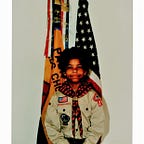Takashi Arai: Contemporary Antique Photographic Processes
For this essay I chose Takashi Arai, a filmmaker, visual artist and modern-day Daguerreotypist. Takashi is based in Kawasaki, Japan. Remarkably, his first encounter with photography was while at school studying something completely different. Taking an interest in its history Takashi came across the Daguerreotype. Through trial and error, he has perfected the daguerreotype method and feels this medium carries better memory than its digital counterparts can offer (Strecker). To a degree I feel the same. I believe the Daguerreotype method is capturing something in the spectrum of radiation that may have an impact on the subconscious that digital devices cannot reproduce.
In a Vimeo link provided in the Strecker interview, Takashi takes viewers through the laborious process of buffing, sensitizing, photographing, fixing, etc. I’ve never operated a Daguerreotype or been a part of the preparation and development process. There are processes in photography that are constant, but a Daguerreotype Photographer goes through a much different process than what I go through as a digital photographer. Not to mention the fact that most of the materials, including mercury, he is working with are hazardous to touch or breathe and require protective gear (Strecker).
I have seen a Daguerreotype up close and was able to look through the viewfinder. The guy operating it, Ed, was all dressed up in mid-nineteenth century gear with gloves and goggles as part of a larger group of photographers, vintage to the newest of the new tech, that make it to T.R.O.G. (The Race of Gentlemen) in Wildwood, N.J. Ed had an assistant, too, and they were processing their images in a wagon converted to be an onsite darkroom; customized in mid-nineteenth century fashion. I was there as an assistant for Daniel Byrne, a photographer I’d been interning and working for for about a year and a half, to capture portraits during the event. To be prepared for anything and everything you carry as much equipment as possible while not restricting your mobility, which means a checklist if you’re smart. I usually carry the extra camera bodies/lens bag and a boom stick with lighting, banks and the battery packs. Sounds like a lot if you’ve never carried that much, but that’s kinda light for the work. Not nearly as much as Ed’s assistant was dealing with, though! The goal was to replicate the antiquing method since there would be plenty of people in vintage costumes and all manner of internal combustion engines.
Takashi Arai has invested his curiosity in the daguerreotype method to capture subjects of a more nuclear nature. His style is documentary, realist, and minimalist. Excellent portrait photography with an incredible sense of light that gives his images a very life-like presence. View images on the site provided in this paragraph. The main subject or focus in his captures say enough. He has also continued with a mostly strictly analog process using only slightly modified processes dating back to the time of its invention. Arai also embraced the potential of the “blueing effect” Daguerreotypists have historically stayed away from, claiming the effect an imperfection. The Portraits of people who have been affected by the nuclear disaster at Fukushima will draw you in as well. Takashi took an interest in photographing nuclear issues in 2010. Since 2017 Takashi has been involved as a researcher at The Institute for Research in Humanities, Kyoto University (takashiarai.com).
Works Cited:
- Arai, Takashi. “Takashi Arai Studio”, https://takashiarai.com
- Strecker, Alexander. “Storing Memories: Contemporary Japanese Daguerreotypes”, Lensculture.com https://www.lensculture.com/articles/takashi-arai-storing-memories-contemporary-japanese-daguerreotypes#slideshow
